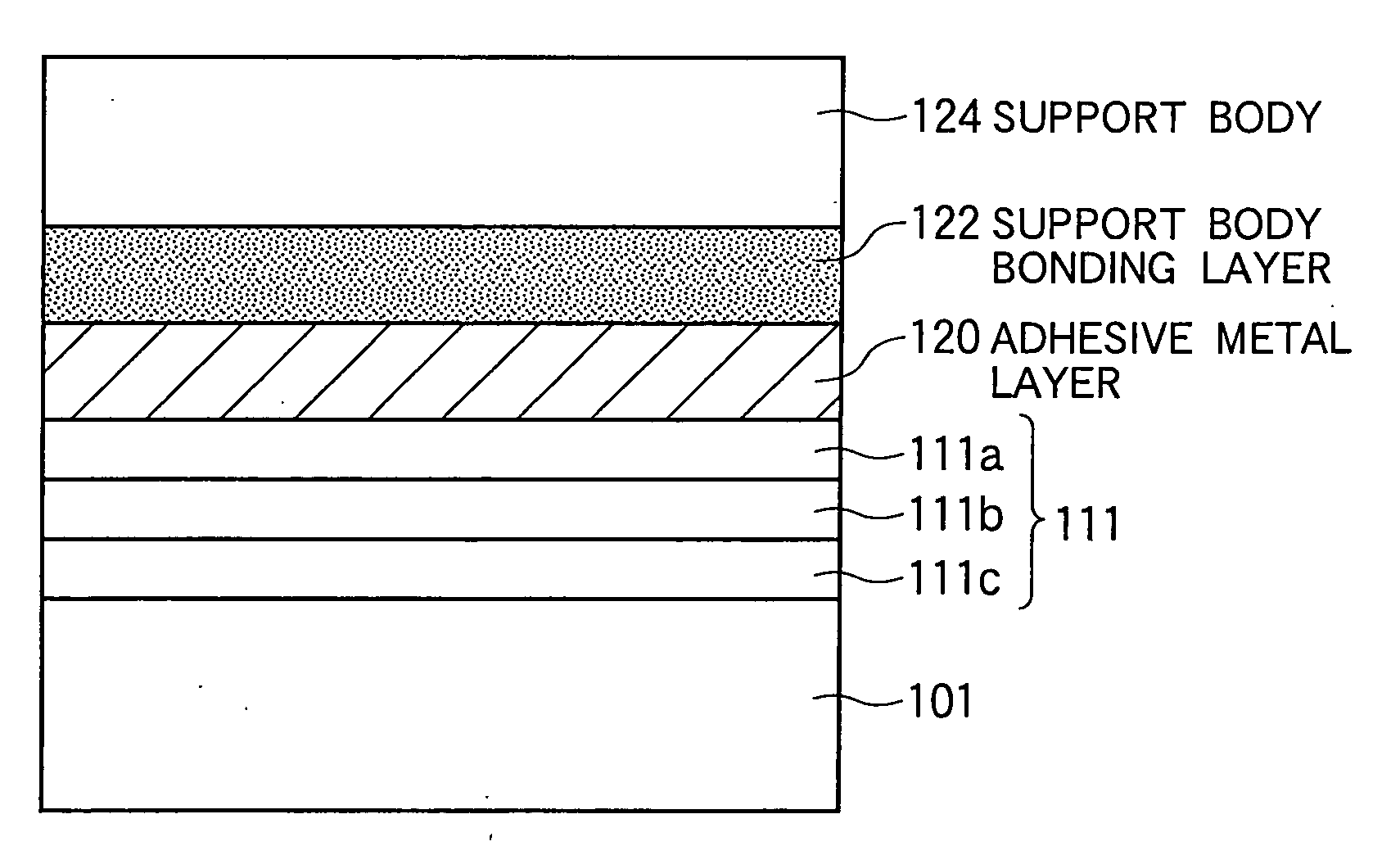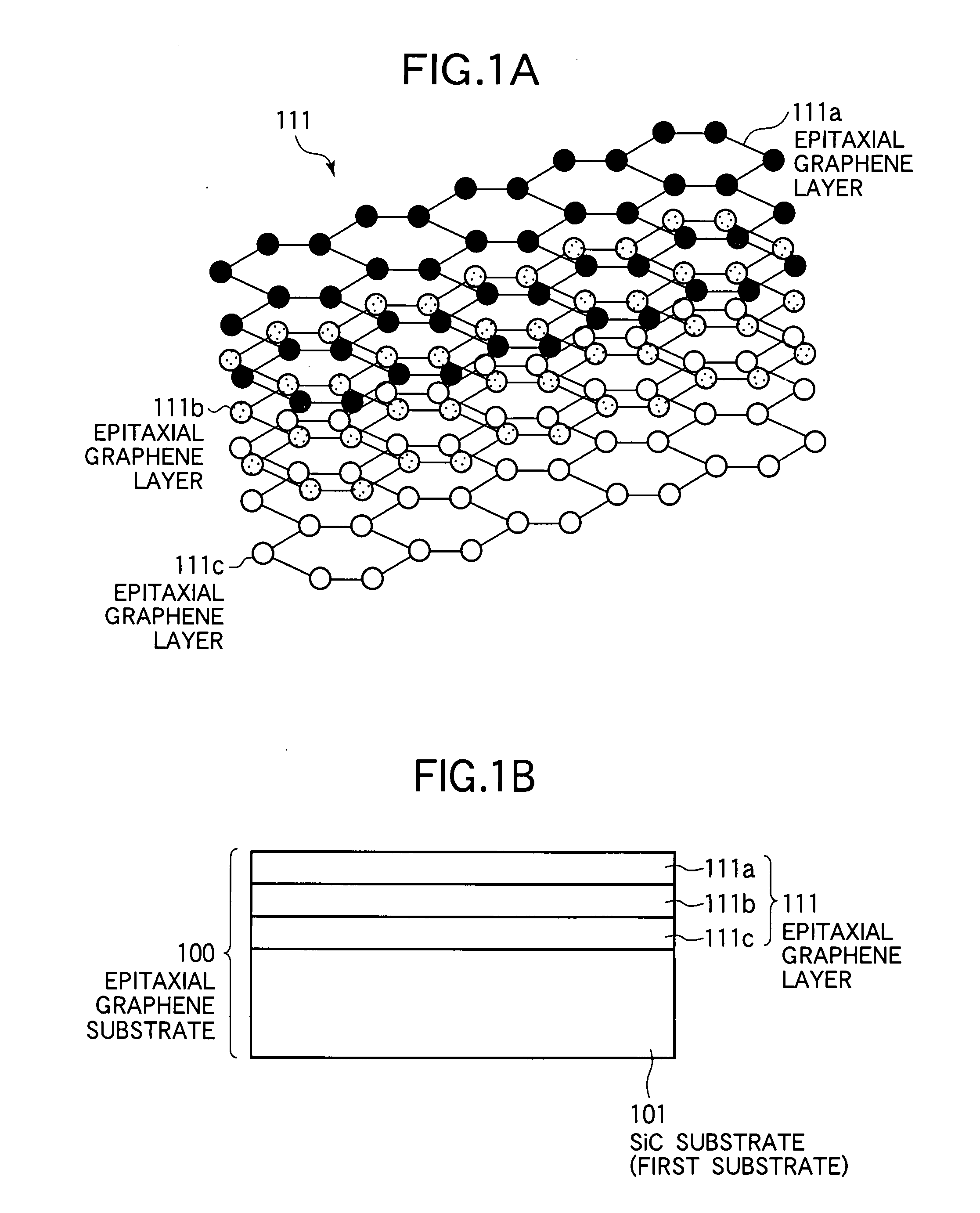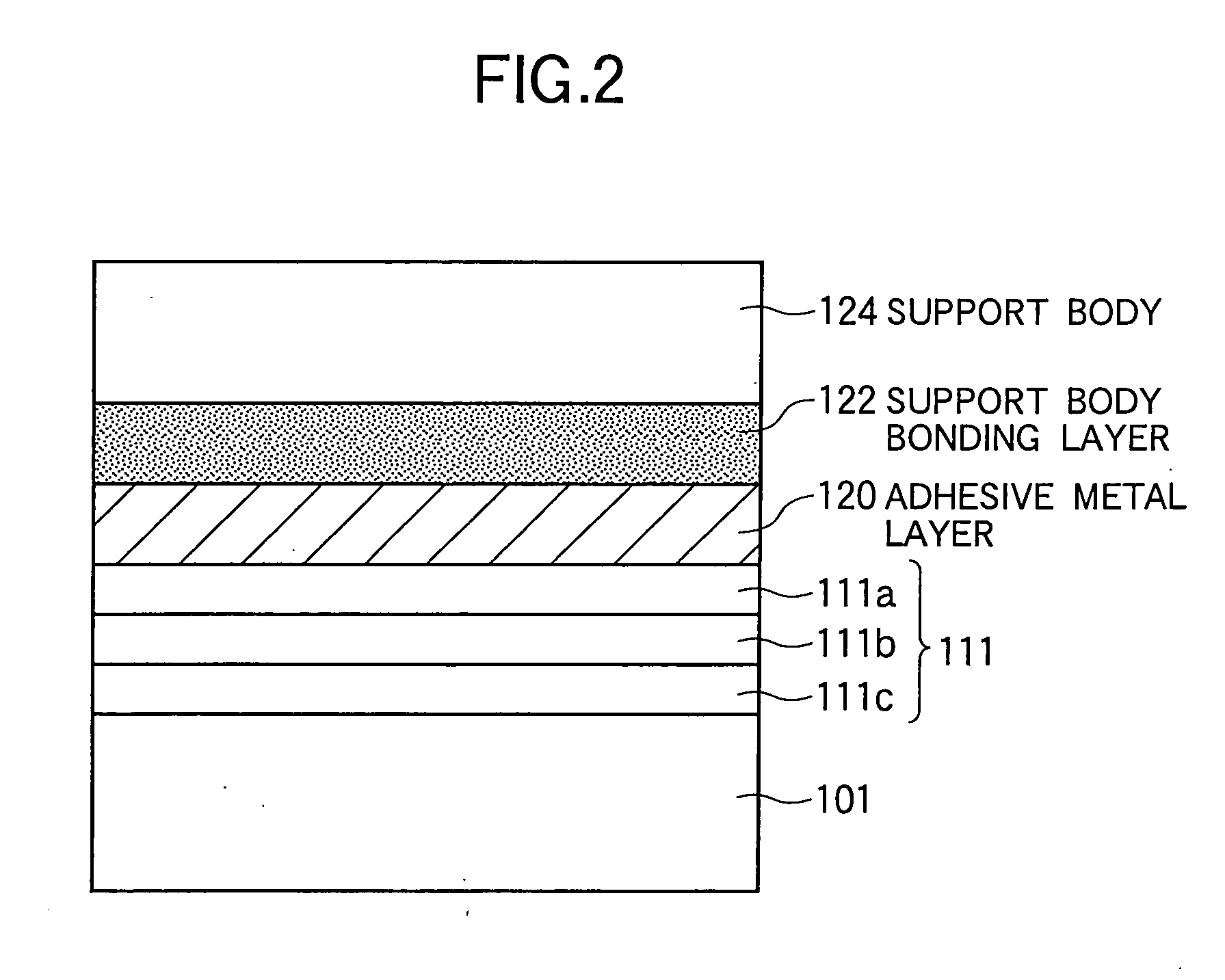Graphene wafer, method for manufacturing the graphene wafer, method for releasing a graphene layer, and method for manufacturing a graphene device
a graphene wafer and graphene technology, applied in the field of graphene wafers, can solve the problems of difficult to obtain graphene sheets having a large area, difficult to transfer epitaxial graphene layers in their entirety onto another substrate, and difficult to obtain epitaxial graphene layers, etc., to achieve good repeatability
- Summary
- Abstract
- Description
- Claims
- Application Information
AI Technical Summary
Benefits of technology
Problems solved by technology
Method used
Image
Examples
first embodiment
[0066]A first embodiment will be described with reference to FIGS. 1A, 1B, 2, 3A, 3B, 4A, 4B, 5A, 5B, 6, 7A, and 7B. FIGS. 1A and 1B illustrate an epitaxial graphene substrate 100. The epitaxial graphene substrate 100 includes an SiC substrate 101 and an epitaxial graphene layer 111.
[0067]The configuration of the epitaxial graphene layer 111 will be described with reference to FIG. 1A. The epitaxial graphene layer 111 is a flat monolayer of carbon atoms C (solid circles, polka dot pattern circles, and white circles in FIG. 1A) tightly packed into a two-dimensional (2D) honeycomb lattice or a multilayer structure of sheets of the flat monolayer. FIG. 1A is a conceptual representation of a three-layer structure of an epitaxial graphene layer 111a (solid circle), an epitaxial graphene layer 111b (polka dot pattern circle), and an epitaxial graphene layer 111c (white circle). An SiC substrate 101 is subjected to high temperature hydrogen etching and high temperature heat treatment in va...
second embodiment
[0107]The first embodiment is directed to manufacturing a single large-area graphene wafer in which the large-area graphene layer 111a is bonded to the surface of the second substrate 130 or the surface of the bonding layer 132 formed on the second substrate 130. In contrast, a second embodiment is directed to bonding a pre-patterned graphene layer onto a substrate. The second embodiment will be described with respect to FIGS. 8 to 10.
[0108]FIG. 8A is a top view illustrating a graphene pattern.
[0109]FIG. 8B is a cross sectional view illustrating a process for releasing a graphene.
[0110]Referring to FIG. 8A, a graphene layer 111 (not shown) is formed on the surface of an SiC substrate 101 (first substrate) and is patterned by photolithography and then dry-etching using O2 plasma, thereby forming a graphene pattern 210. The graphene pattern 210 in a line pattern shown in FIG. 8A is exemplary and the graphene pattern 210 having any shape is possible.
[0111]Referring to FIG. 8B, the grap...
third embodiment
[0125]A third embodiment is directed to a method of manufacturing a graphene device using a large-area graphene wafer described in the first embodiment. The third embodiment will be described with reference to FIGS. 11-13.
[0126]In the description below, a graphene thin film transistor (TFT) will be used as an exemplary graphene device based on a large-area graphene wafer.
[0127]FIG. 11A illustrates a graphene wafer 300 having a large-area graphene layer formed thereon. The graphene wafer 300 includes an SiO2 film 302 as a bonding layer formed on an n+-SiC substrate 301 and a graphene layer 310 bonded by intermolecular force onto the surface of the SiO2 film 302. The SiO2 film 302 may take the form of a thermally-oxidized film.
[0128]FIG. 11B is a cross-sectional view of the graphene wafer and FIG. 11C is a top view of a graphene wafer. Referring to FIG. 11B and FIG. 11C, a step of photolithography and a step of dry-etching using O2 plasma are performed to pattern the graphene layer 31...
PUM
| Property | Measurement | Unit |
|---|---|---|
| Force | aaaaa | aaaaa |
| Structure | aaaaa | aaaaa |
| Shape | aaaaa | aaaaa |
Abstract
Description
Claims
Application Information
 Login to View More
Login to View More - R&D
- Intellectual Property
- Life Sciences
- Materials
- Tech Scout
- Unparalleled Data Quality
- Higher Quality Content
- 60% Fewer Hallucinations
Browse by: Latest US Patents, China's latest patents, Technical Efficacy Thesaurus, Application Domain, Technology Topic, Popular Technical Reports.
© 2025 PatSnap. All rights reserved.Legal|Privacy policy|Modern Slavery Act Transparency Statement|Sitemap|About US| Contact US: help@patsnap.com



